I can usually find at least one queen, if not more, along with the cloud of neoniger alates......
- Formiculture.com
- Forums
- Gallery
- Members
- Member Map
- Chat

I can usually find at least one queen, if not more, along with the cloud of neoniger alates......
"God made..... all the creatures that move along the ground according to their kinds (including ants). And God saw that it was good. Genesis 1:25 NIV version
Keeping:
Tetramorium immigrans Camponotus vicinus, modoc, novaeboracensis, herculeanus
Formica pallidefulva, argentea Solenopsis molesta
Formica cf. aserva Lasius brevicornis, neoniger
It must be the region. Here you have to be blind and always stay inside to miss neoniger flights.
"God made..... all the creatures that move along the ground according to their kinds (including ants). And God saw that it was good. Genesis 1:25 NIV version
Keeping:
Tetramorium immigrans Camponotus vicinus, modoc, novaeboracensis, herculeanus
Formica pallidefulva, argentea Solenopsis molesta
Formica cf. aserva Lasius brevicornis, neoniger
2/21/20
The colony has ~100 larvae right now, and I am moving them to a new test tube. I will have pictures next update.
Ant Keeping & Ethology Discord - 2000+ Members and growing
Statesideants.com - order live ants legally in the US
2/23/20
I got them to move to a new test tube. Got some videos and pictures in the process. I noticed after the move that the colony has parasitic mites, the workers at least. I haven't noticed any on the queen but I have introduced Hypoaspis mites in order to hopefully kill of the parasitic mites. See the video and photos below and you could observe the mites. A very small amount of workers have mites.
Here's part of their brood pile shortly before they moved
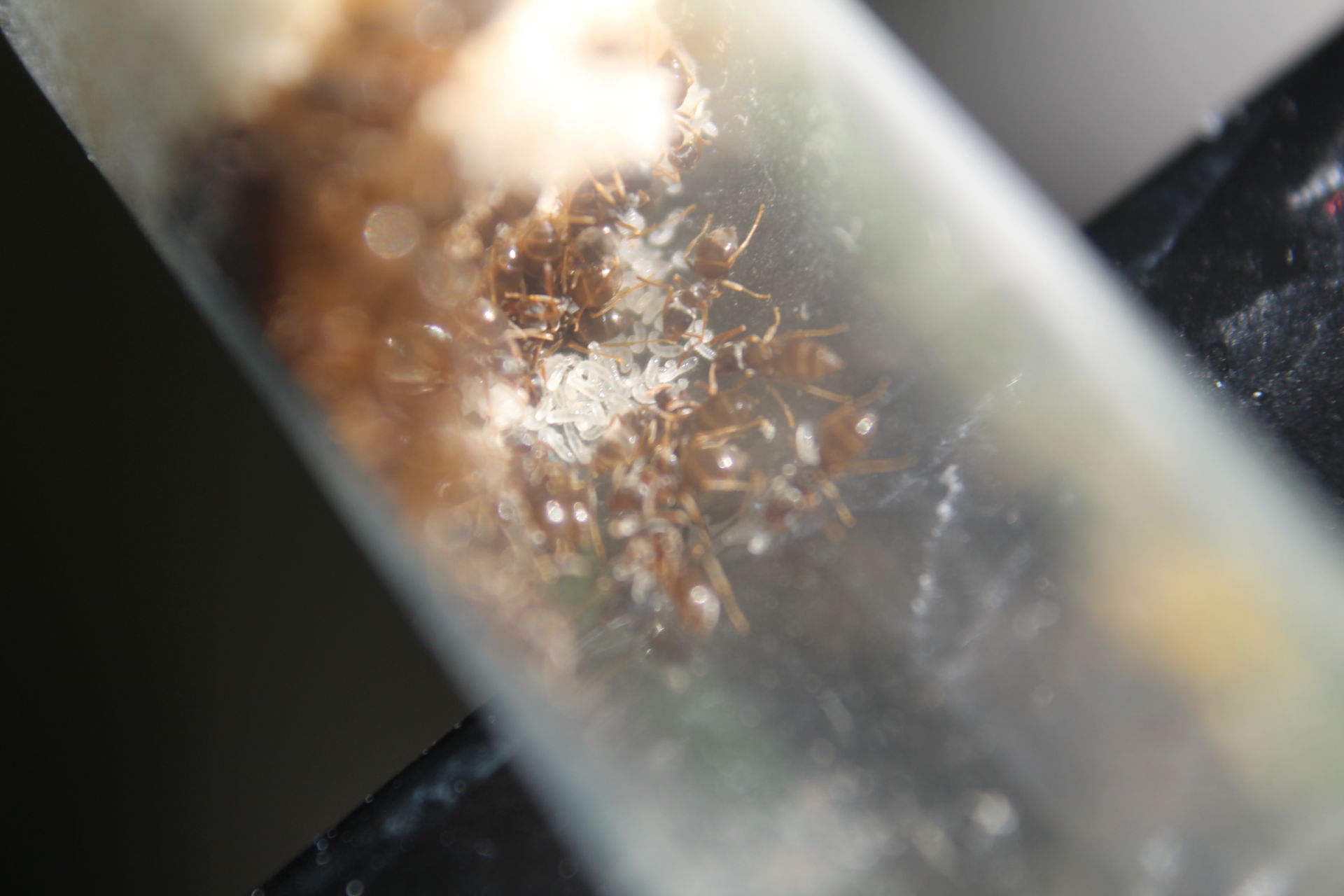
Here's them part-way through the move
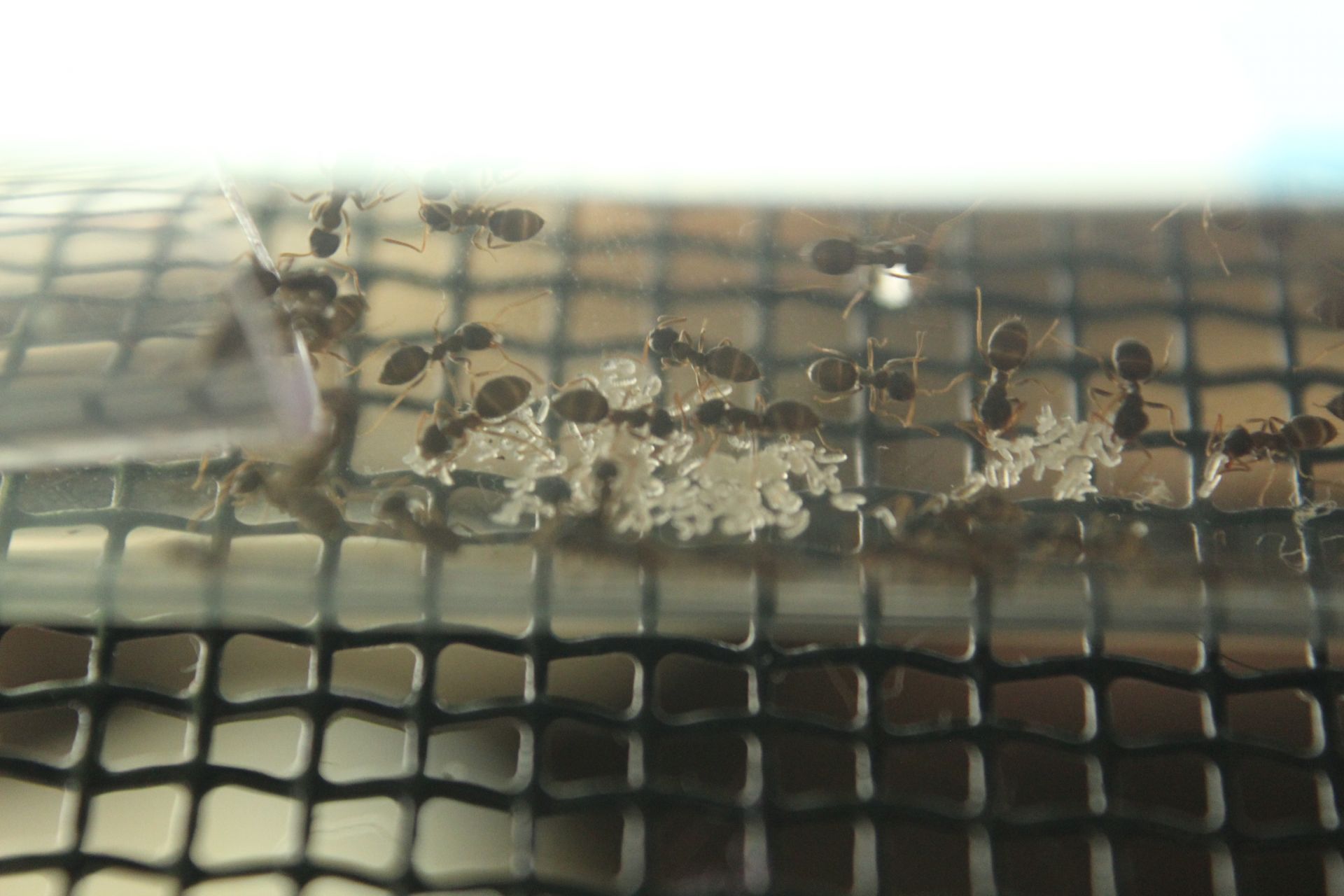
Here's them after the move
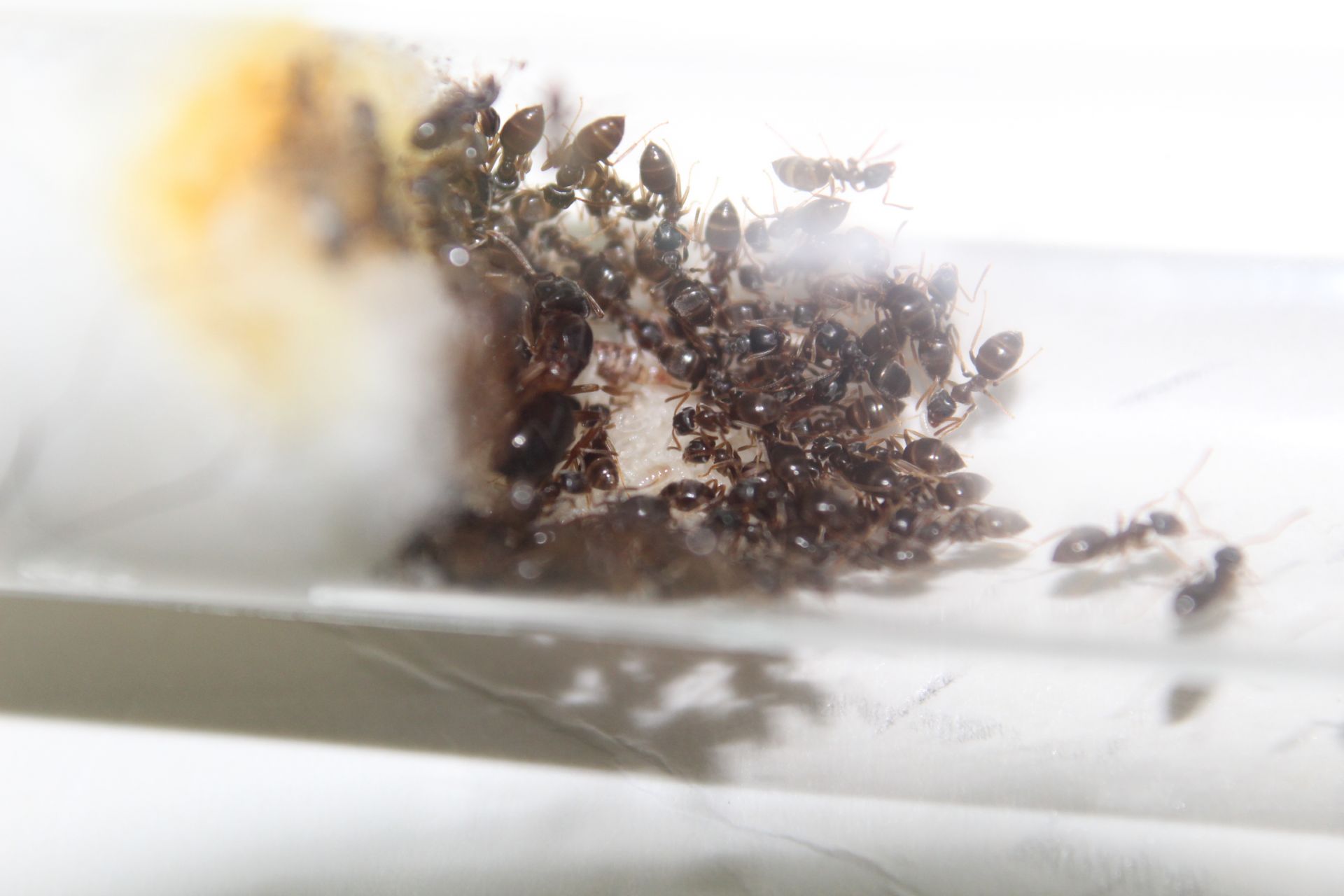
Notice the worker at the bottom of the sunburst drop has a mite on it's leg
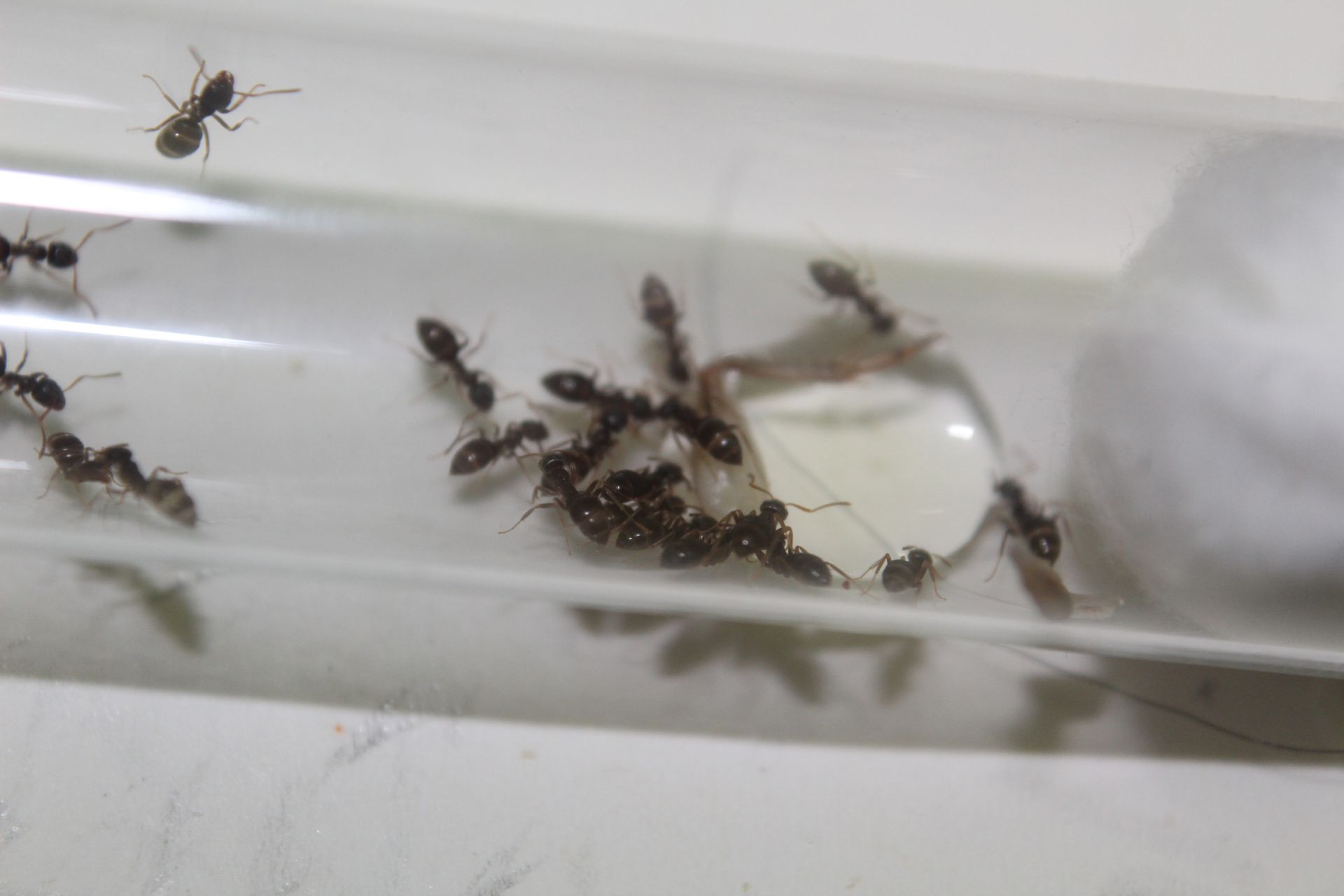
Here's a video. It shows them moving and at the end shows a worker with a mite. If you look closely you might notice a few more of them with mites. I noticed when the queen was moving (or refusing to), the workers would make a jumping sort of motion, perhaps encouraging the queen to get moving.
Ant Keeping & Ethology Discord - 2000+ Members and growing
Statesideants.com - order live ants legally in the US
Parasitic lasius are interesting, especially host to parasitic queen interactions, seems like both are in a power struggle sometimes
"God made..... all the creatures that move along the ground according to their kinds (including ants). And God saw that it was good. Genesis 1:25 NIV version
Keeping:
Tetramorium immigrans Camponotus vicinus, modoc, novaeboracensis, herculeanus
Formica pallidefulva, argentea Solenopsis molesta
Formica cf. aserva Lasius brevicornis, neoniger
3/25/20
I'm not sure why I forgot to update this before today, but today was a big day.
The queen from the last update got her first worker! I have never gotten to this point before, and it was exciting to see the pale, small worker standing among the hosts. There's also a few males from when the hosts laid eggs after hibernation, for some reason. The brood pile in that colony is healthy and there will be a few more workers eclosing soon.
On the other hand, today was almost 60 degrees Fahrenheit here, so some of the ants woke up. I went out and flipped rocks and logs, and came home with a few Lasius parasite queens and workers for them.
I found two large, orange Lasius parasite workers under a log and collected them. I also found a Lasius cf. aphidicola queen, 3 Lasius claviger queens all hibernating together, right beside 1-2 dozen small orange Lasius, probably Lasius brevicornis or nearcticus or something else.
At the time of writing, the Lasius cf. aphidicola queen which was caught today has seemingly been able to cooperate with the two large parasite workers. I also put the three claviger queens with all of the small orange ones, since I found them together and I didn't have enough workers to split them up. I made some observations when introducing the ants to one another.
The cf. aphidicola queen and her two host workers were at first aggressive, since the queen met them inside of the workers tube. I cannot emphasize enough that the biggest secret to introduction is to get both of the parties calm or at least not aggressive. I put them in new tubes, so that both parties were in completely new territory and then connected the two tubes. Within two minutes, the queen and the smaller worker have already had a peaceful interaction where neither ran off but they both simply paused for a second. The workers were at first making aggressive gestures, but did not fully attack, and when they pulled the queen did not react. The queen seemed to realize what was happening, and adopted a cautious, careful manner to her movement around the workers. When a worker came in contact with her, she'd lower herself and wait for them to calm down or walk away. Over about an hour, both parties had calmed down and they were all sitting together. I currently have them in a test tube setup.
With the three claviger queens, they have been standing together beside their hosts, but I am unsure if they've accepted one another. There's dirt in the tube which causes some condensation and the smaller workers mostly hide under it, barely coming in contact with the queens. When they do, however, the queens are calm and the workers seem to be loosening up around them.
Here's pictures and videos from today.
Here's the pictures of the newly eclosed parasitic worker (it might be hard to notice)
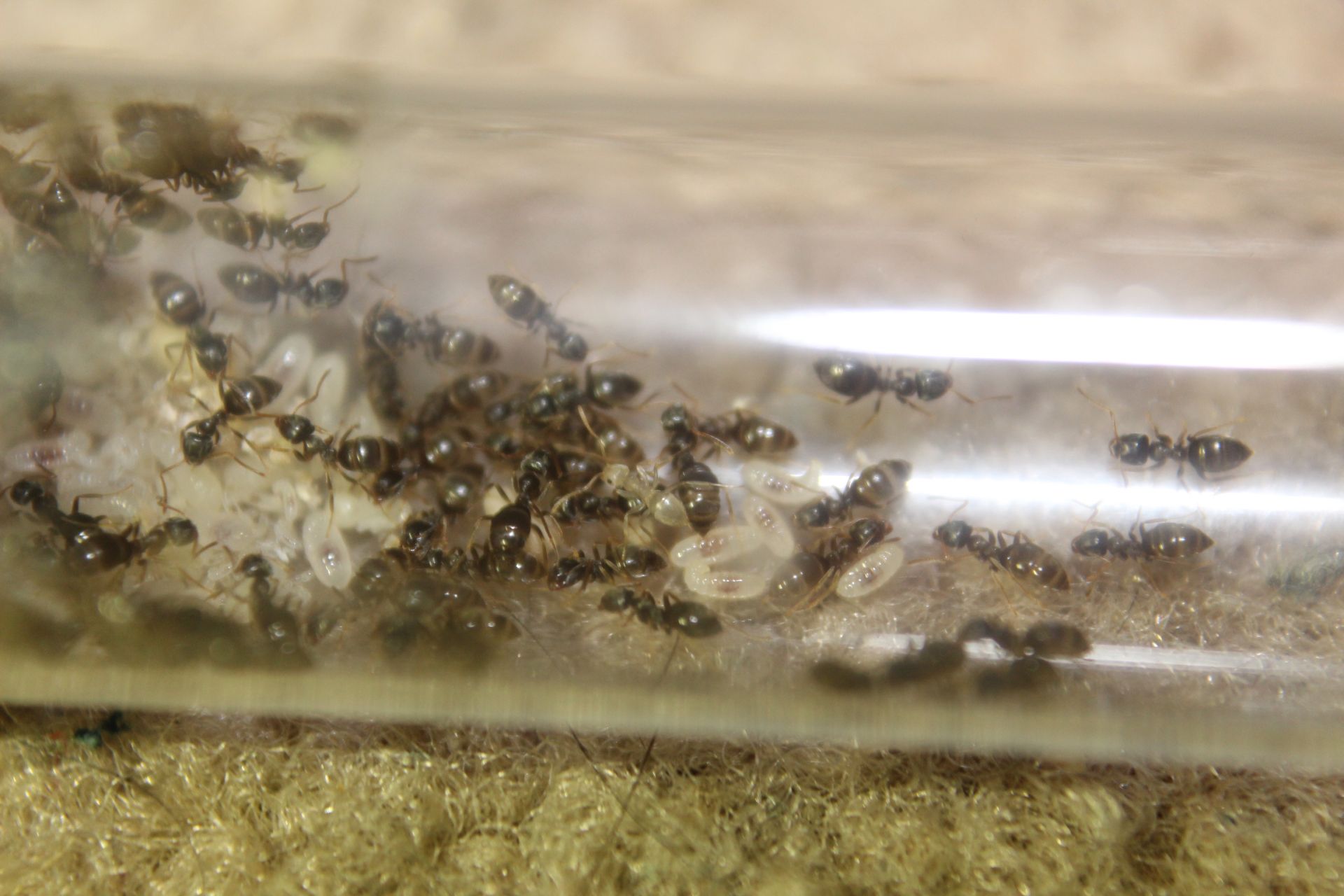
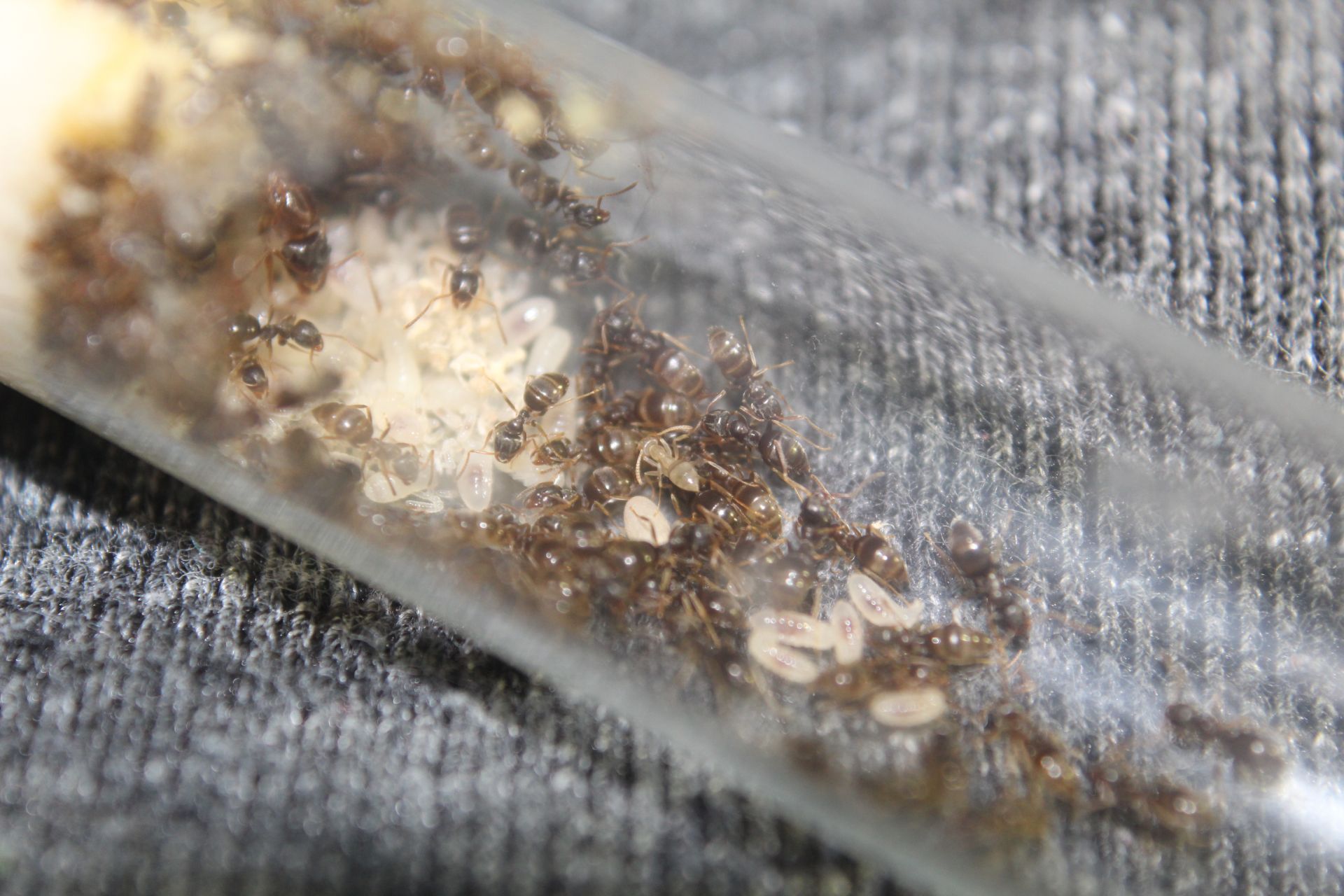
Here's the brood pile, there's a new batch of eggs out of frame, too.
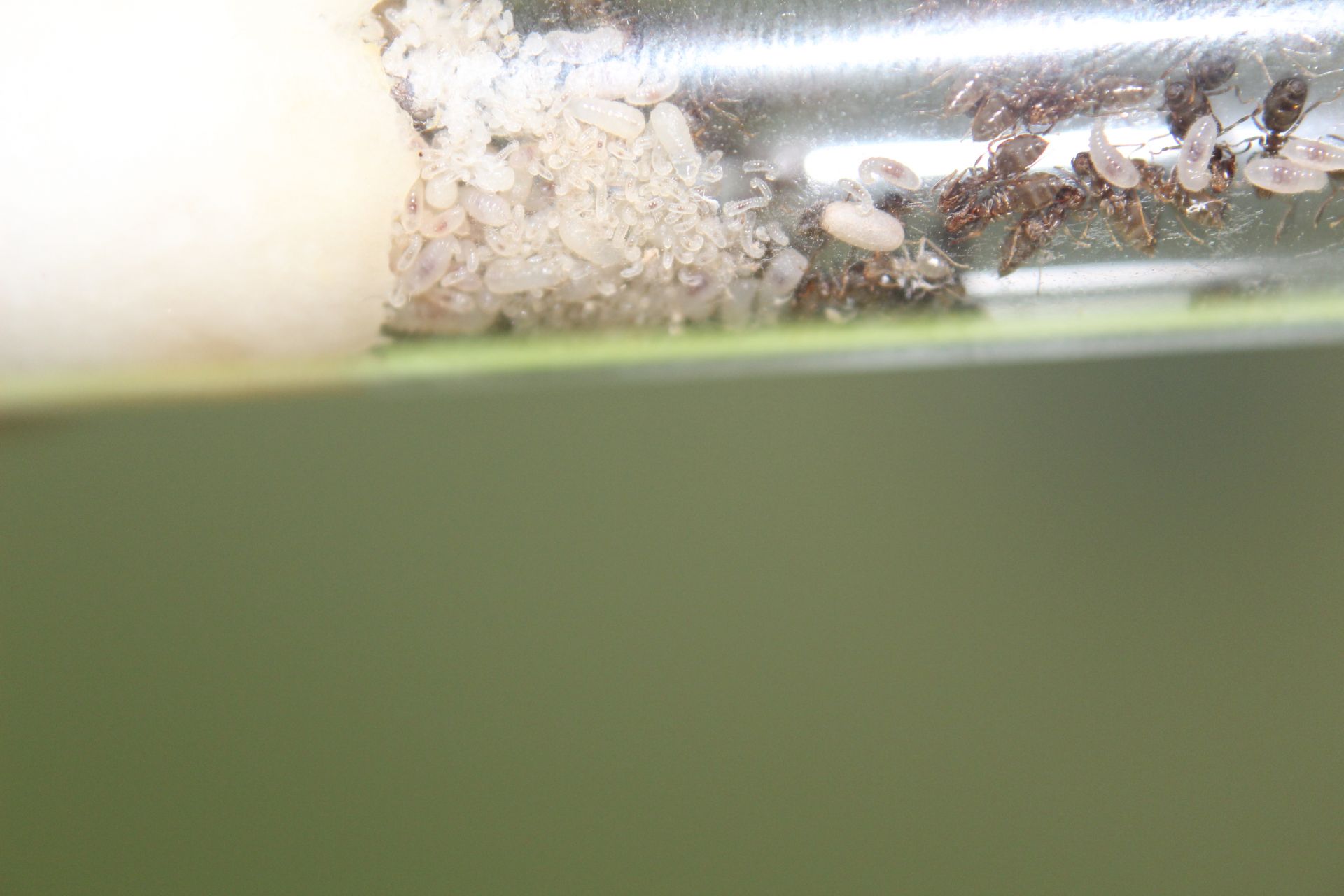
Here's the three Lasius claviger queens before being introduced to the workers
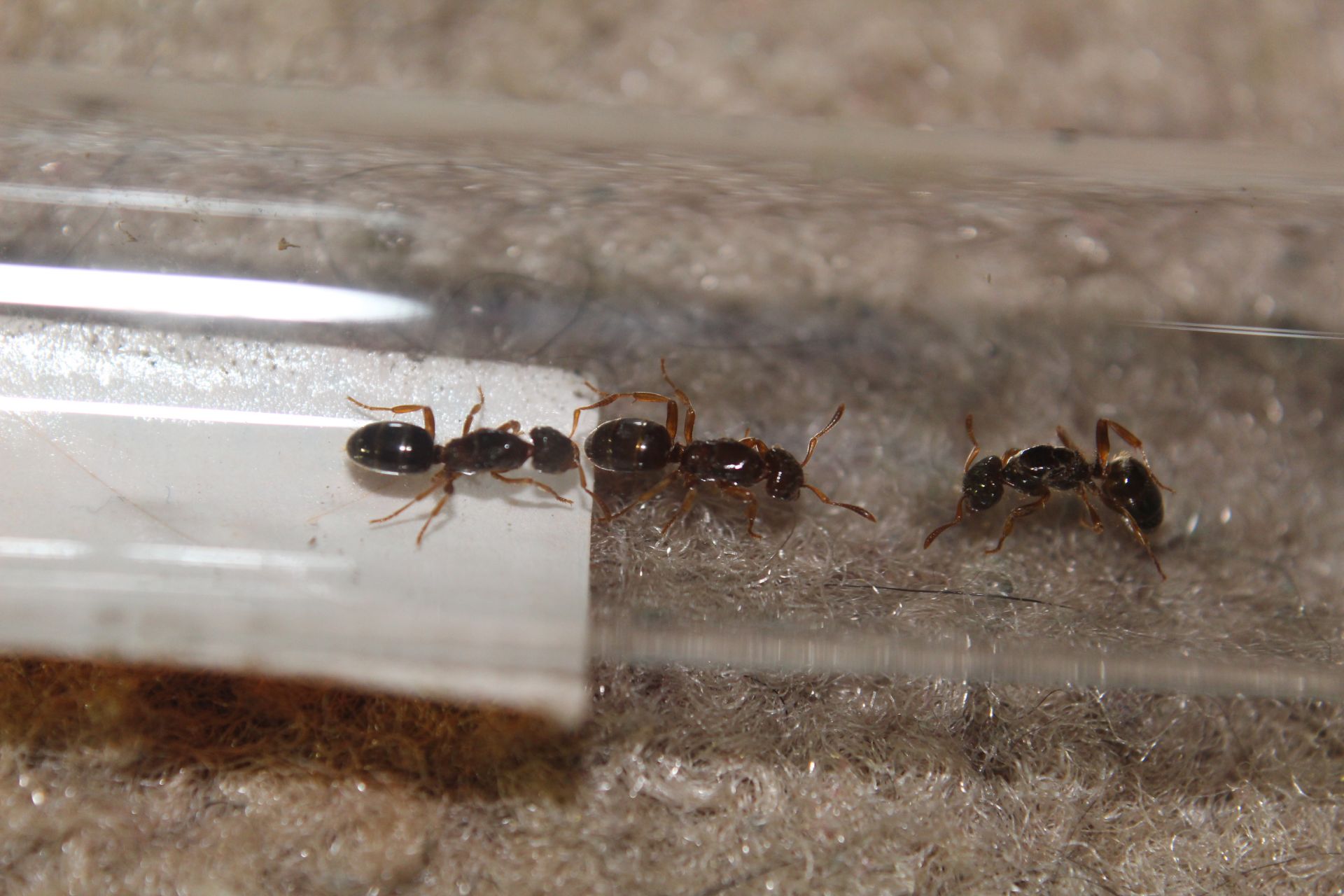
Here's the cf. aphidicola during introduction
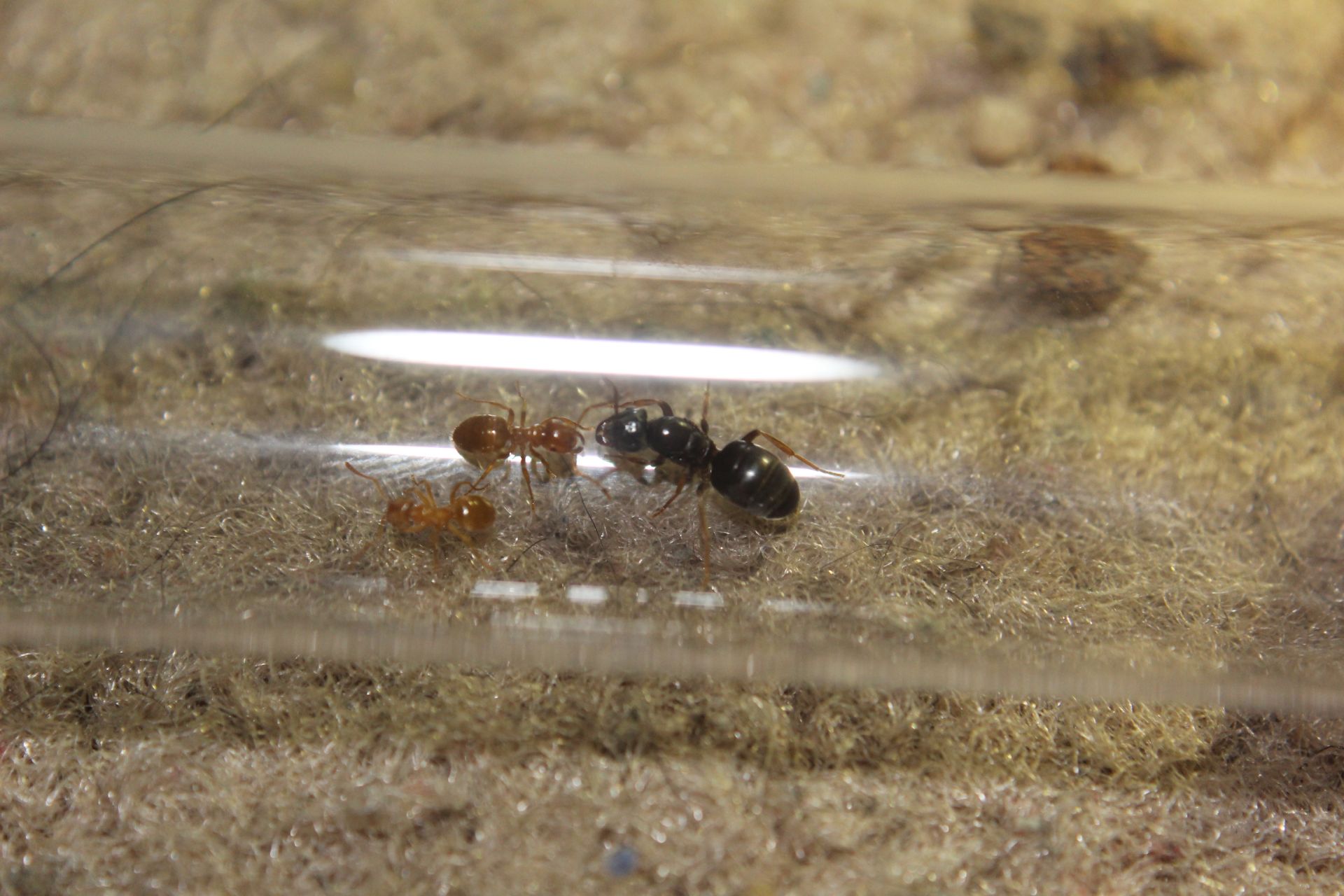
Here's the cf. aphidicola after introduction in their new tube
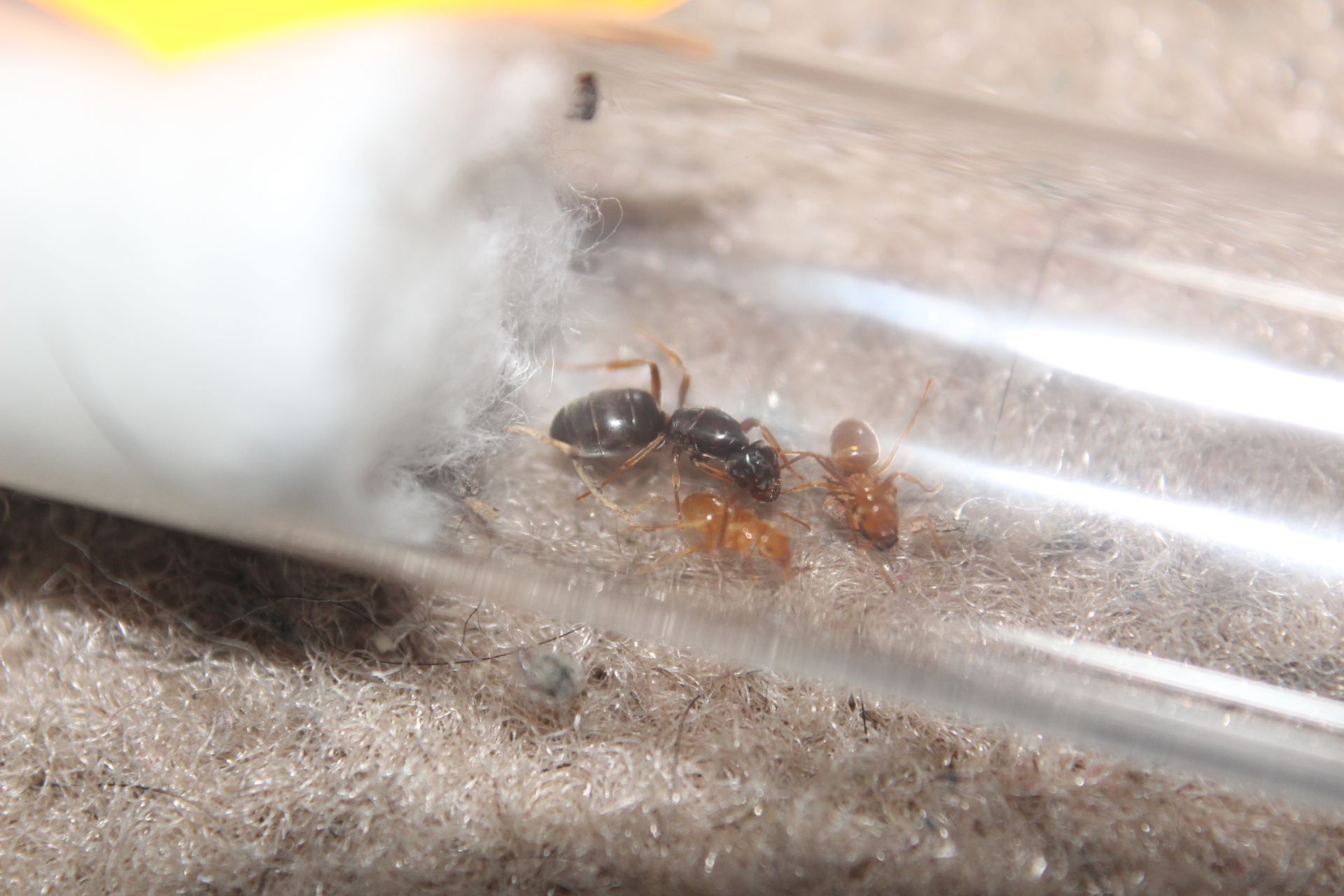
Here's a video featuring part of the introduction. Notice the larger, darker worker is more aggressive than the smaller one and that the queen doesn't fight back when abused.
Ant Keeping & Ethology Discord - 2000+ Members and growing
Statesideants.com - order live ants legally in the US
I had a Lasius Aphicola queen, but I couldn't find a colony to raid so I had to let her go, but she was the best queen I had [so far]
There is a important time for everything, important place for everyone, an important person for everybody, and an important ant for each and every ant keeper and myrmecologist alike
4/2/20
The queen from the previous update killed her workers or they died for no reason.
Today I collected a dozen Lasius claviger workers and a few dozen Lasius brevicornis workers. I introduced a Lasius claviger queen to the claviger workers but I checked on them after a few hours and, although they had a smooth introduction and acceptance phase, I found the queen standing over body parts and a dying worker. So I removed that queen and added a Lasius aphidicola queen. So far they are doing well but I am pretty convinced that parasitic workers are probably not the best hosts, unless you have an absurd amount of them. brevicornis are also not good hosts, and have been incompatible with everything I have put them with (this is not surprising, they're polygynous in the wild).
I also want to mention that I did some comparison of the queens I have caught and changed the ID of some of them. I realized that the queen with about ~50 hosts who has her first worker is actually Lasius speculiventris. I assumed it was a color variation of aphidicola but when I observed closer and used a key, I realized this.
I've noticed Lasius claviger are very violent founders, and killed some of the claviger workers both times that I tried to get a queen accepted. I don't find any huge colonies here that I can get workers from, but a keeper in northern WI is going to give me some of his Lasius americanus workers, and hopefully I can get a few more colonies going. In the meantime, I'll continue to try to use the hosts I have.
Ant Keeping & Ethology Discord - 2000+ Members and growing
Statesideants.com - order live ants legally in the US
I got my cf. aphidicola queen to accept neoniger workers within a few days, the workers just have hiding spots, a couple of the workers do a swift jab motion back and forth to her but she isn't stressed by it. I think its just the hosts being unsure per se, BUT the queens gaster is expanding so I eggspect eggs (hehe get it)
I got my cf. aphidicola queen to accept neoniger workers within a few days, the workers just have hiding spots, a couple of the workers do a swift jab motion back and forth to her but she isn't stressed by it. I think its just the hosts being unsure per se, BUT the queens gaster is expanding so I eggspect eggs (hehe get it)
I see this happen in almost every Lasius colony. It's a strange behavior and I wonder if anyone has figured out what it could mean.
Ant Keeping & Ethology Discord - 2000+ Members and growing
Statesideants.com - order live ants legally in the US
4/9/20
Yesterday, I used Lasius neoniger hosts for my claviger queens. I didn't have enough for all three of them, so I kept two of them together. The single queen has been successfully introduced to about two dozen workers, and the other two were introduced to about 15. Obviously I began by introducing 1-3 workers and then observed, and slowly added more one by one. The single queens introduction was by far the smoothest, no worker ever attacked her that I saw. The dual-queen colony had queens get pulled on by workers as of today, and I'm not sure how it is going to turn out.
The Lasius speculiventris queen now has 3+ biological workers. Her colony is going to explode in the next month or so, and it's really interesting to see the odd orange worker carrying some brood. There's also still that one male from the workers, I'm surprised it's still alive.
Here's some photos of the speculiventris
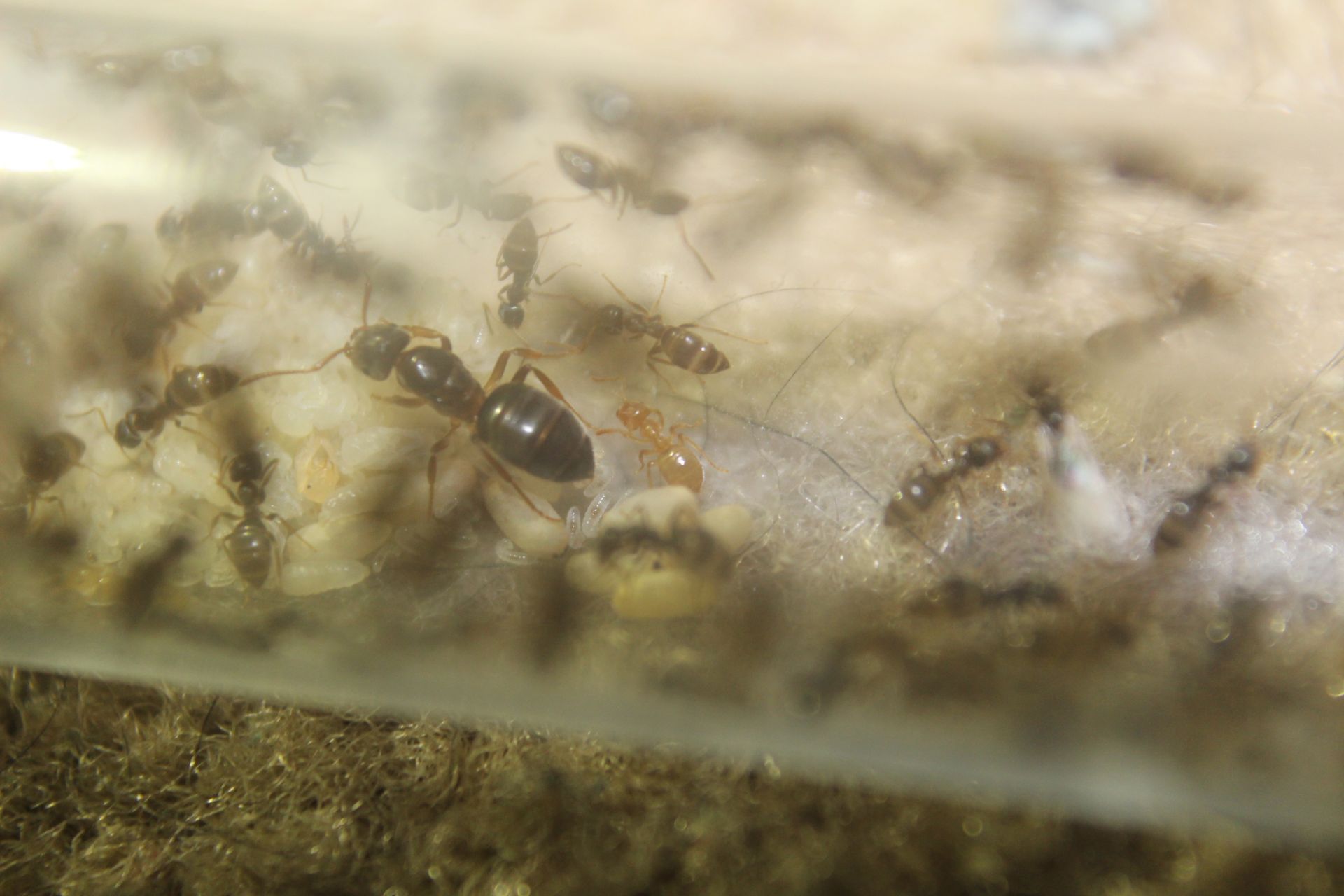
You can see 3 speculiventris workers in the below photo
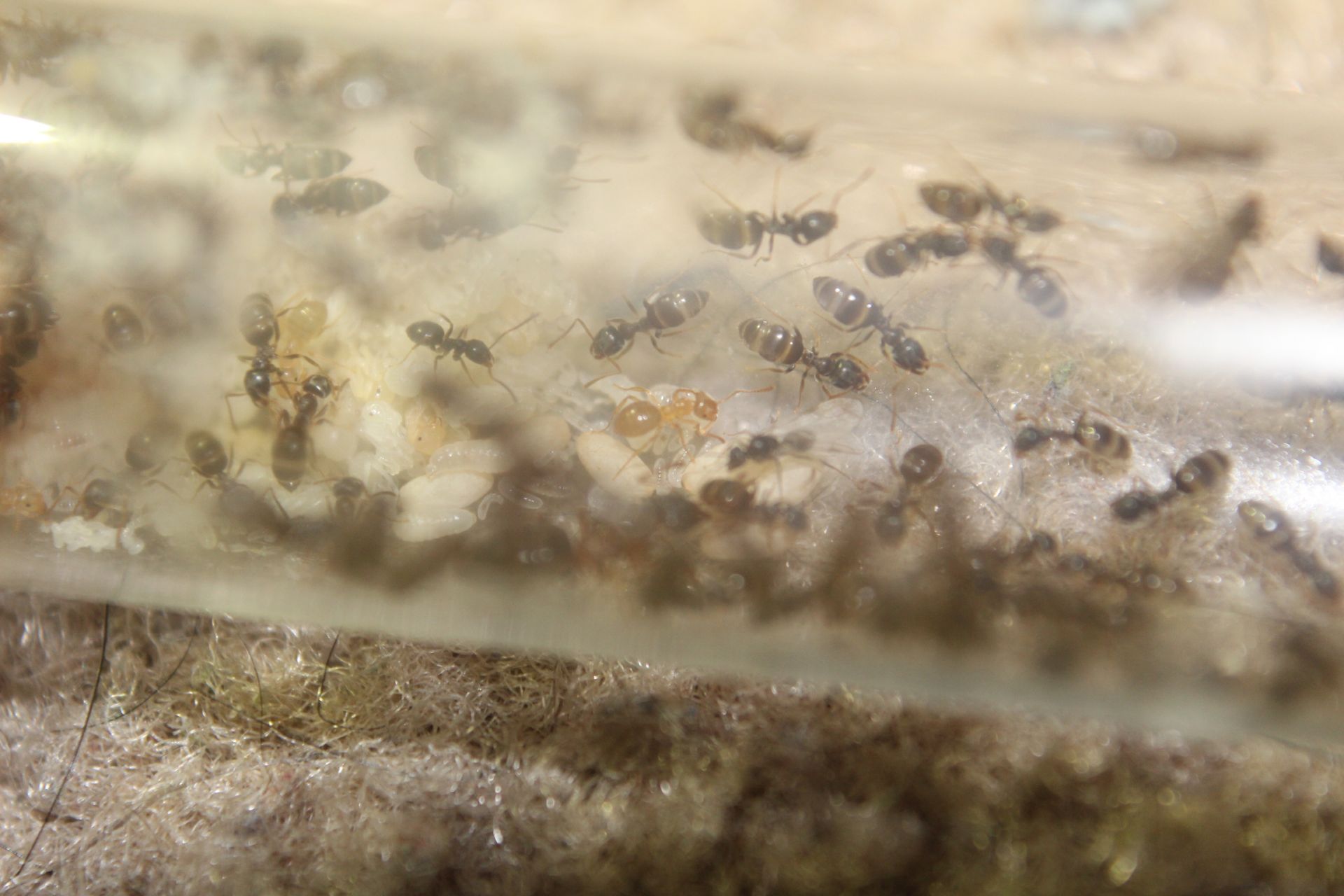
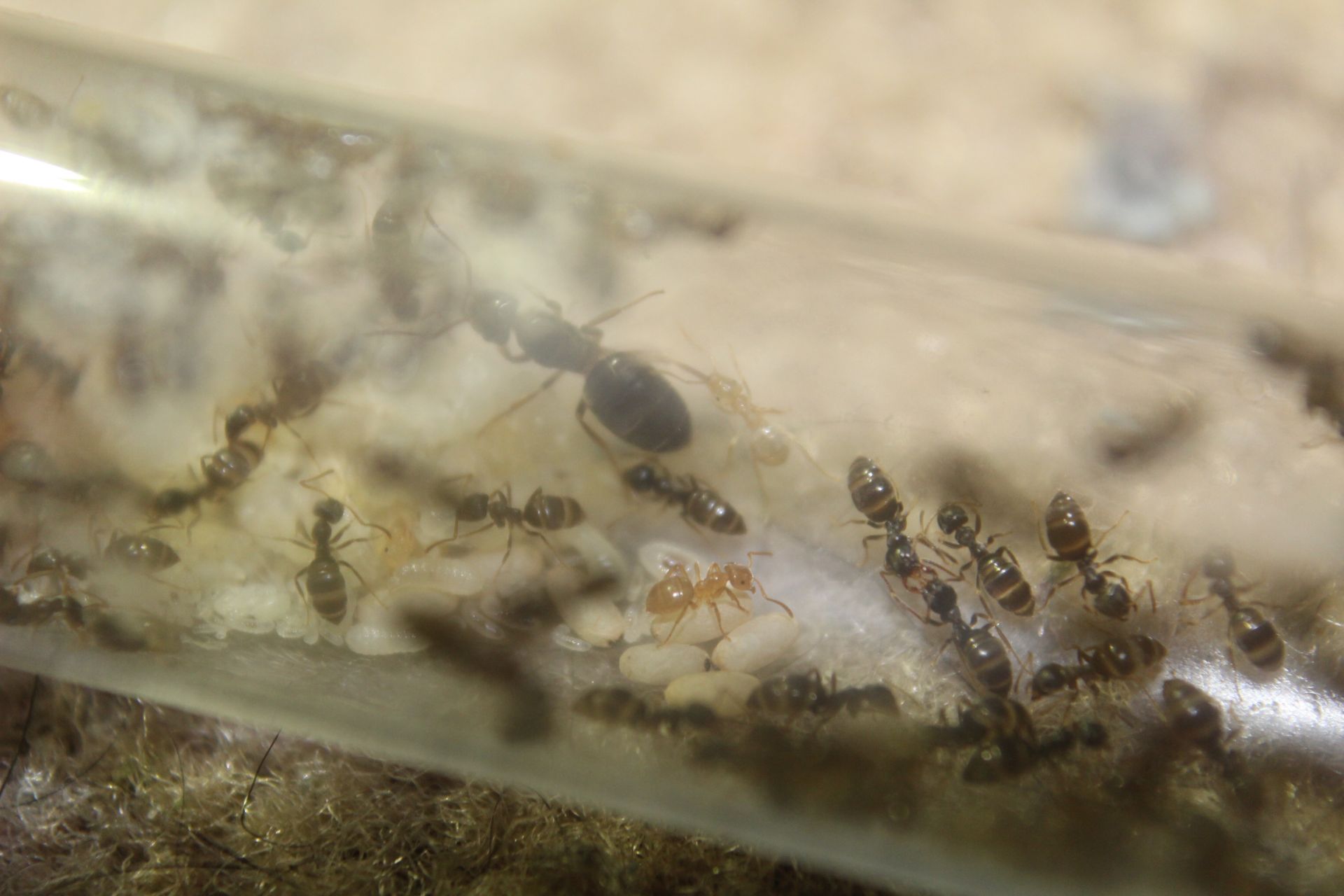
I can't get any decent pictures of the single queen with my camera because she somehow blends in. But I got a few pictures of the dual queen colony.
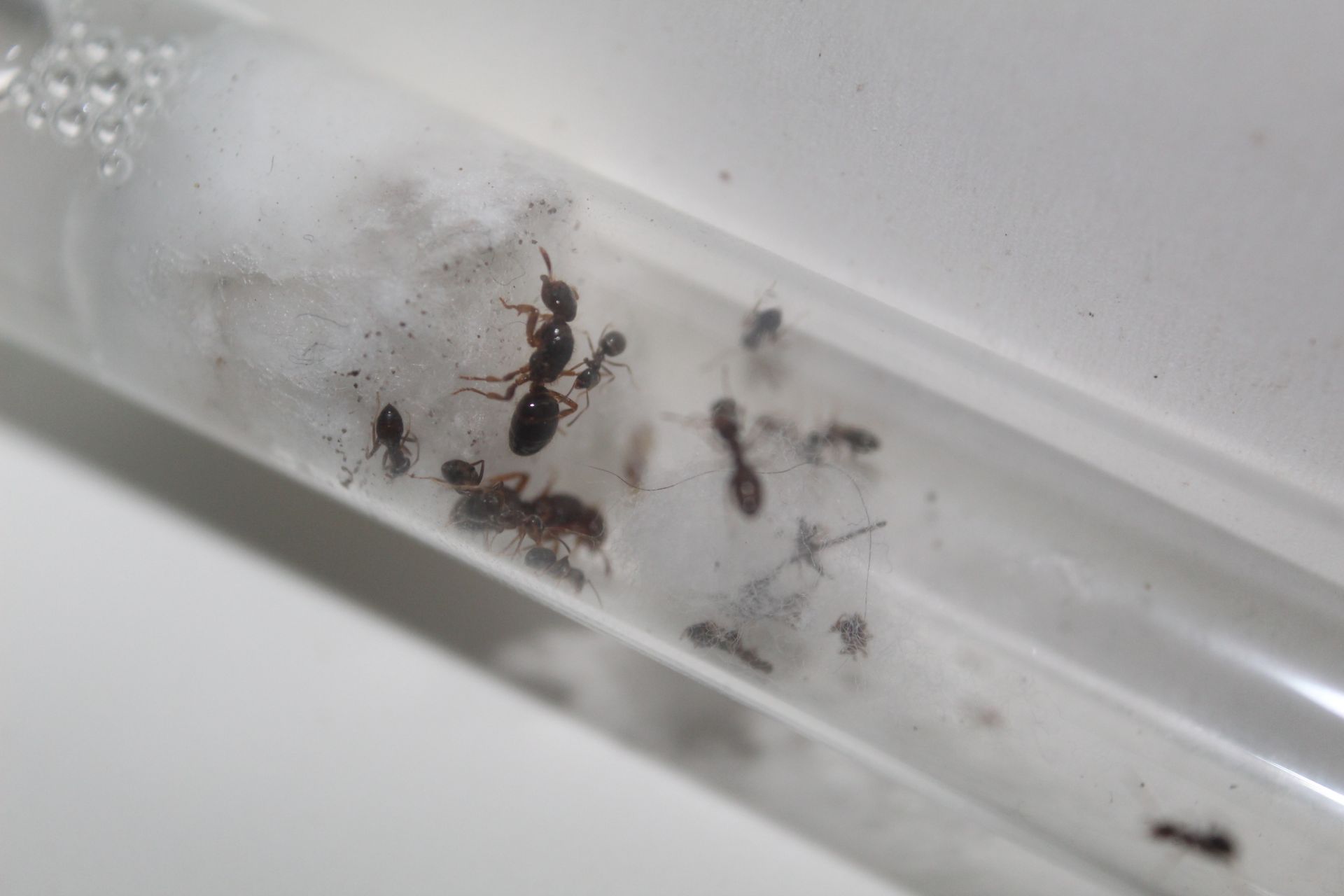
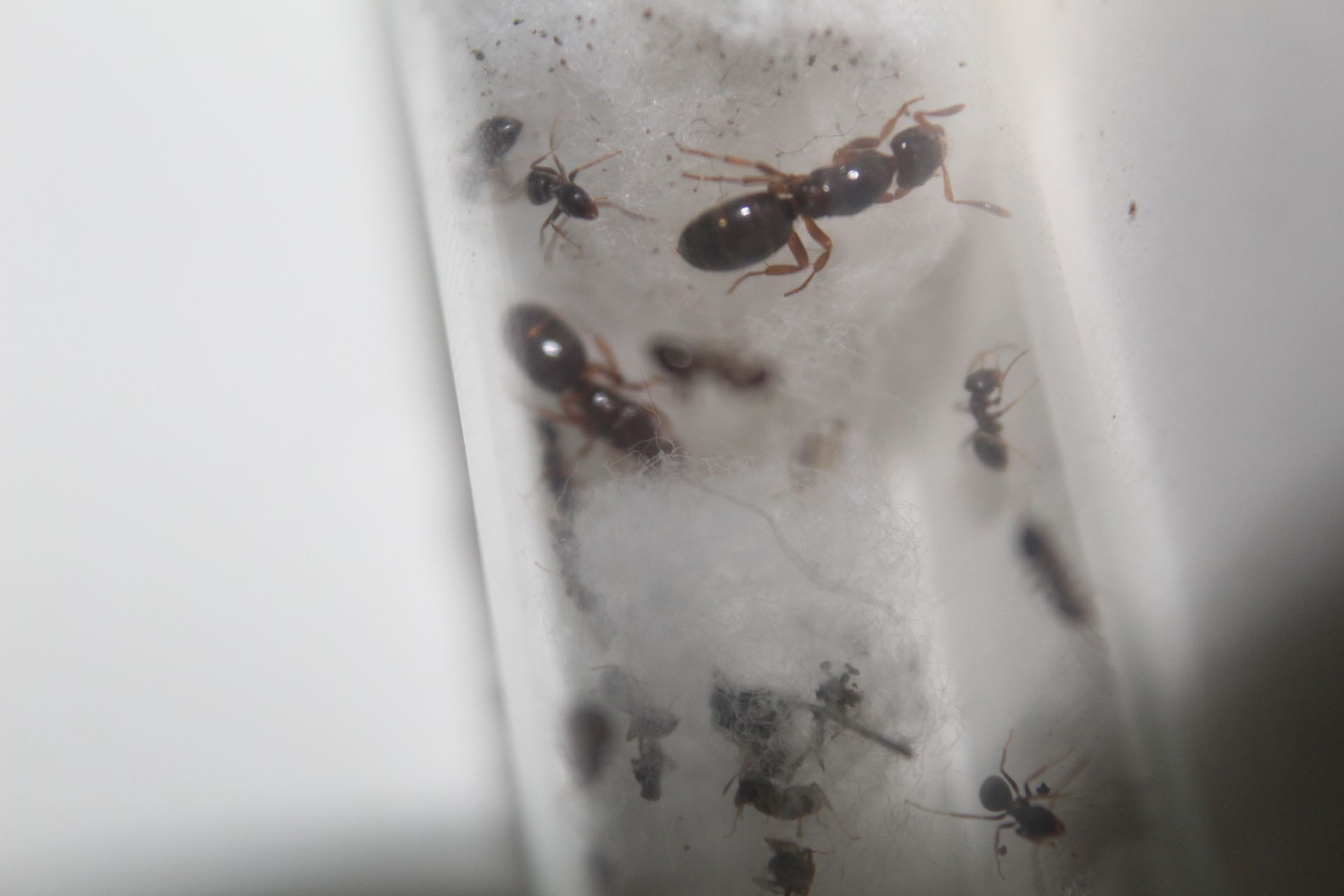
Ant Keeping & Ethology Discord - 2000+ Members and growing
Statesideants.com - order live ants legally in the US
interesting. this is why I wish I had Lasius broof for my Aphicola queen...darn
There is a important time for everything, important place for everyone, an important person for everybody, and an important ant for each and every ant keeper and myrmecologist alike
These were adult workers, not brood.
"God made..... all the creatures that move along the ground according to their kinds (including ants). And God saw that it was good. Genesis 1:25 NIV version
Keeping:
Tetramorium immigrans Camponotus vicinus, modoc, novaeboracensis, herculeanus
Formica pallidefulva, argentea Solenopsis molesta
Formica cf. aserva Lasius brevicornis, neoniger
However when you start out a colony, you need workers and brood. Am I correct Anthony?
There is a important time for everything, important place for everyone, an important person for everybody, and an important ant for each and every ant keeper and myrmecologist alike
It's not necessary, but it does help.
"God made..... all the creatures that move along the ground according to their kinds (including ants). And God saw that it was good. Genesis 1:25 NIV version
Keeping:
Tetramorium immigrans Camponotus vicinus, modoc, novaeboracensis, herculeanus
Formica pallidefulva, argentea Solenopsis molesta
Formica cf. aserva Lasius brevicornis, neoniger
I do try to ensure success with my colonies
There is a important time for everything, important place for everyone, an important person for everybody, and an important ant for each and every ant keeper and myrmecologist alike
I have never included brood in the introduction, I probably won't unless she needs more workers.
Ant Keeping & Ethology Discord - 2000+ Members and growing
Statesideants.com - order live ants legally in the US
4/14/20
The Lasius claviger colonies have been doing well, but have not laid any eggs as far as I can see. I tried moving the single queen colony and I managed to get all of the workers to move, but the queen wouldn't budge. After a while the workers ignored the heat and light and went back with the queen. The dual queen colony has been acting normal, however I notice that the queens are acting sluggish, and I'm worried that the workers might not be feeding the queens.
I finally finished introducing workers one by one to a L. aphidicola colony and went to bed. I woke up and she was dead, for seemingly no reason. Perhaps the workers fought her, but it seems unlikely because they were interacting the day before. I had two more queens and decided to just introduce them to 2 workers. I waited an hour and they seemed super friendly, so I introduced the queen to the rest. It seems to have worked out right now, with minimal fighting.
The L. speculiventris queen has gotten over a dozen biological workers, and I moved them to a new tube in hopes of getting better pictures (their old tube was dirty). I am optimistic about this queens growth, and when I compare her to my other queens she definitely seems more active/energized. I notice some of them have pupated naked.
Here's some pictures:
Lasius speculiventris colony after move
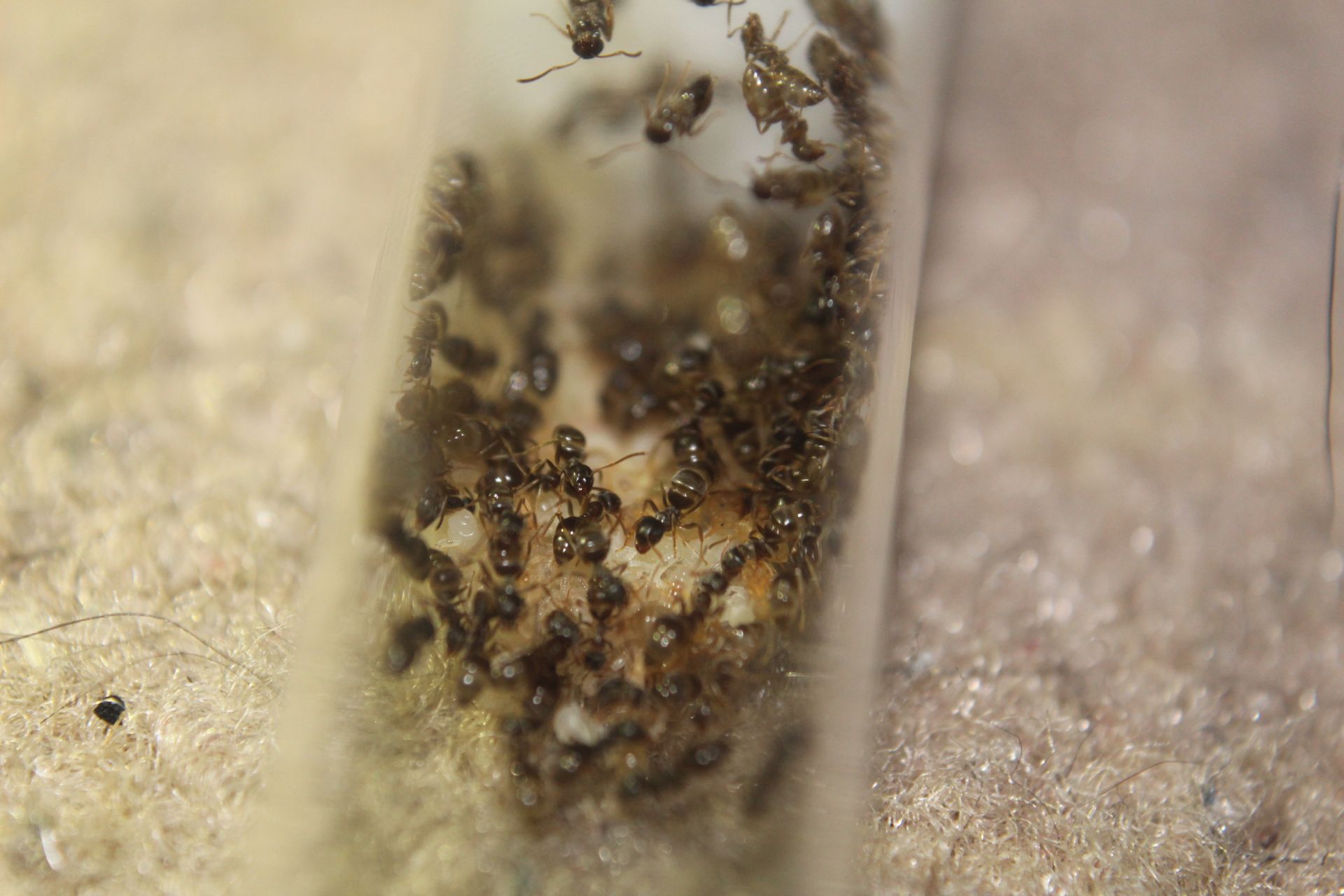
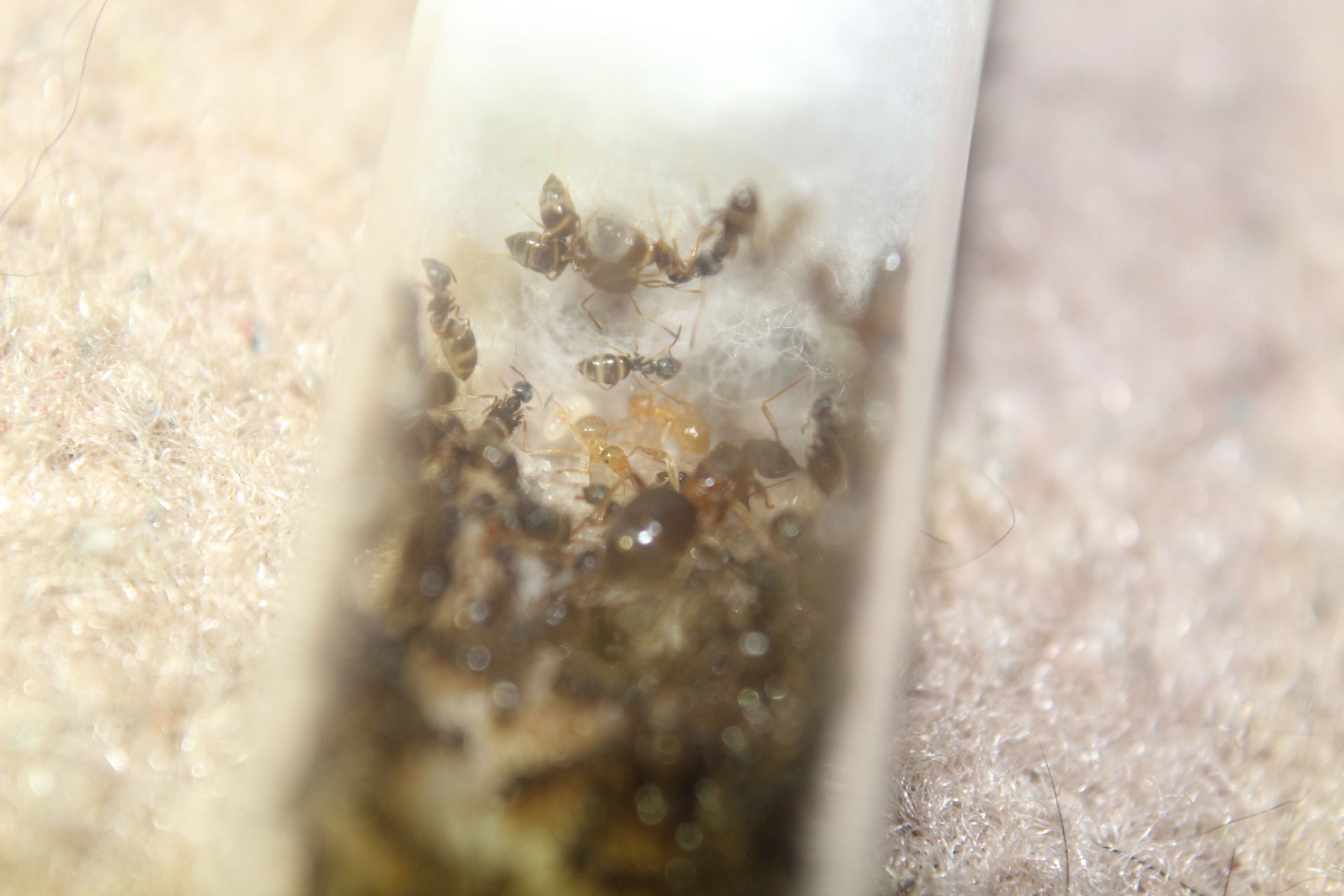
They still have the Lasius americanus male
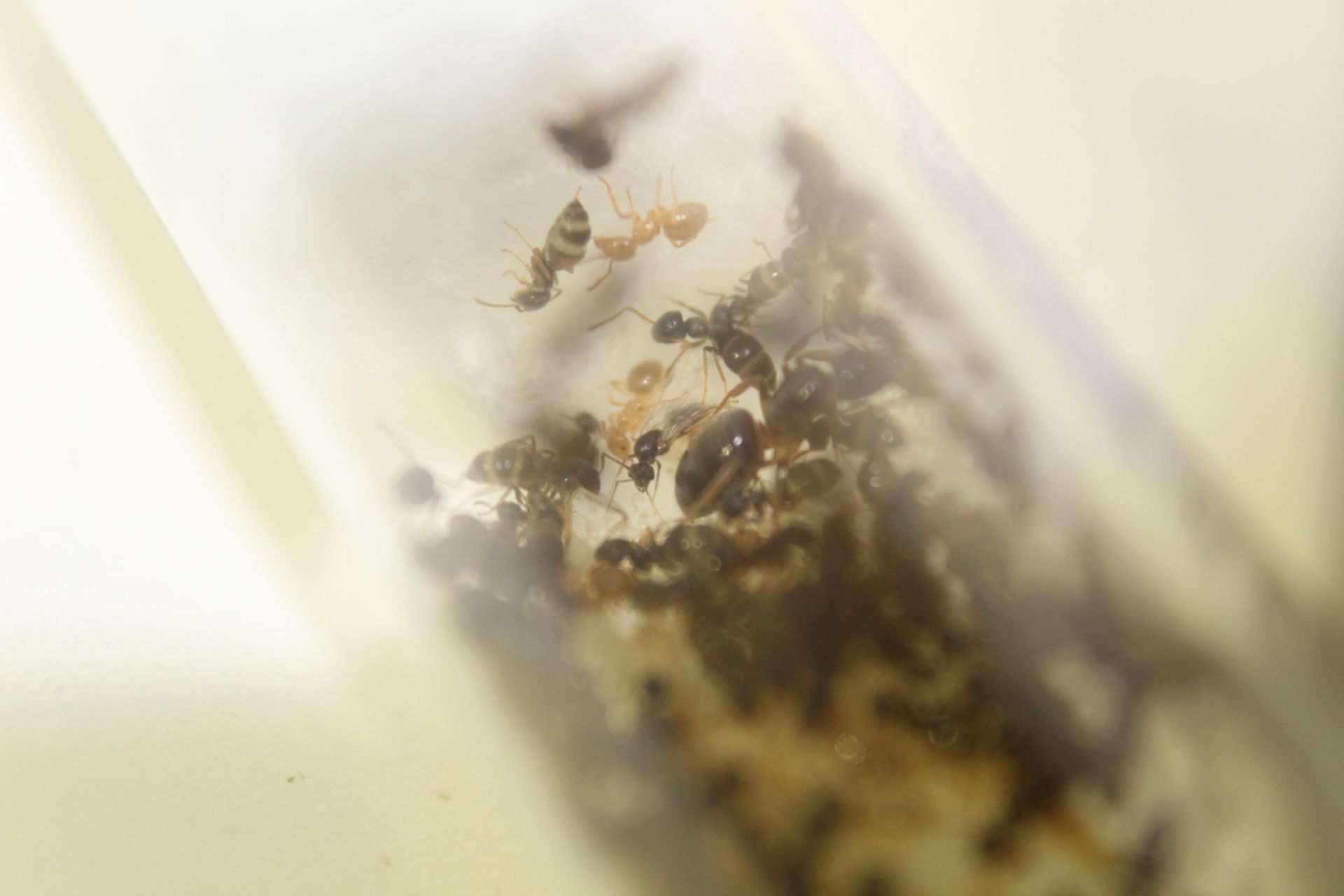
I used antcounter and there's over 250 total brood items visible, majority larvae
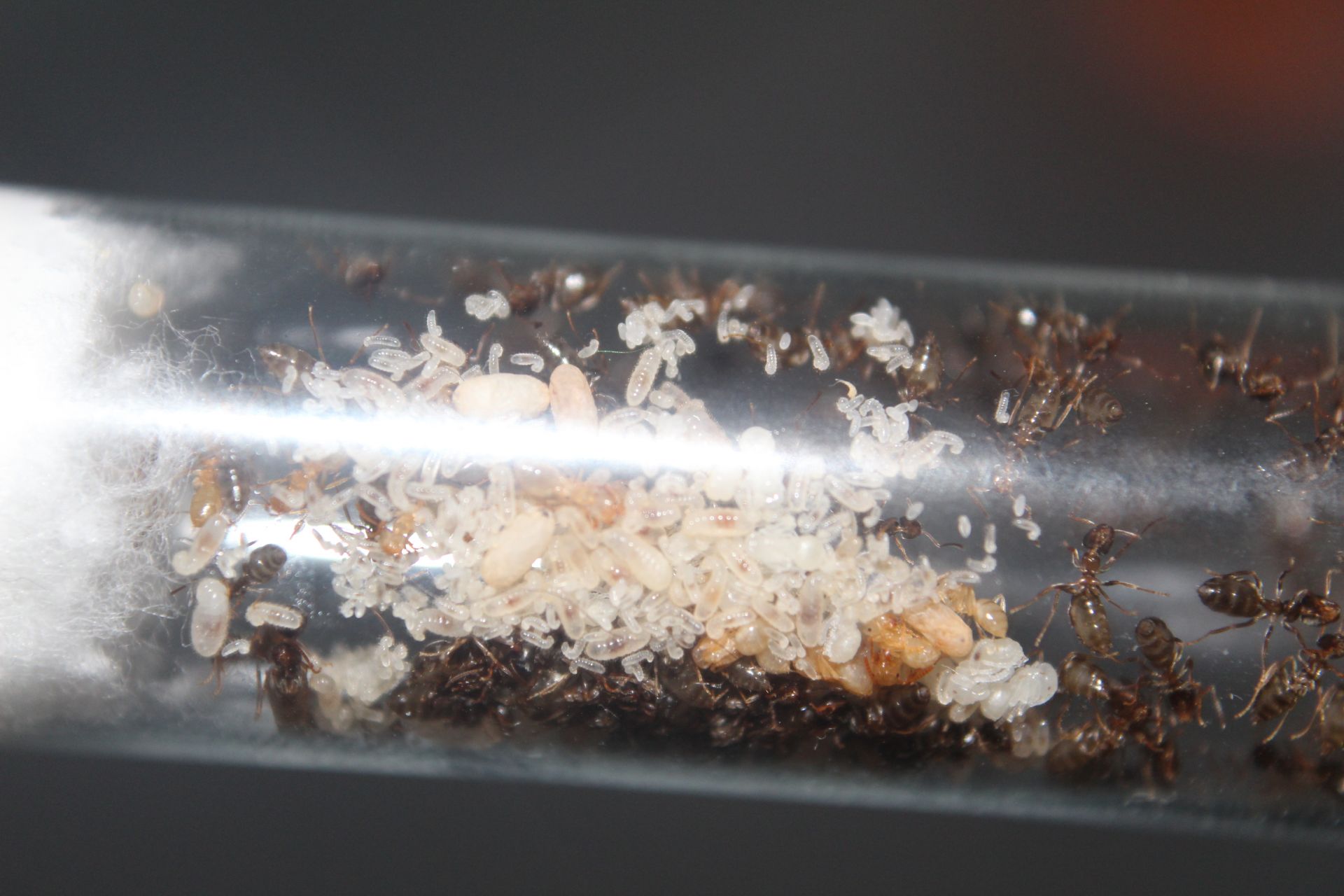
Here's pictures from today, notice all the new workers
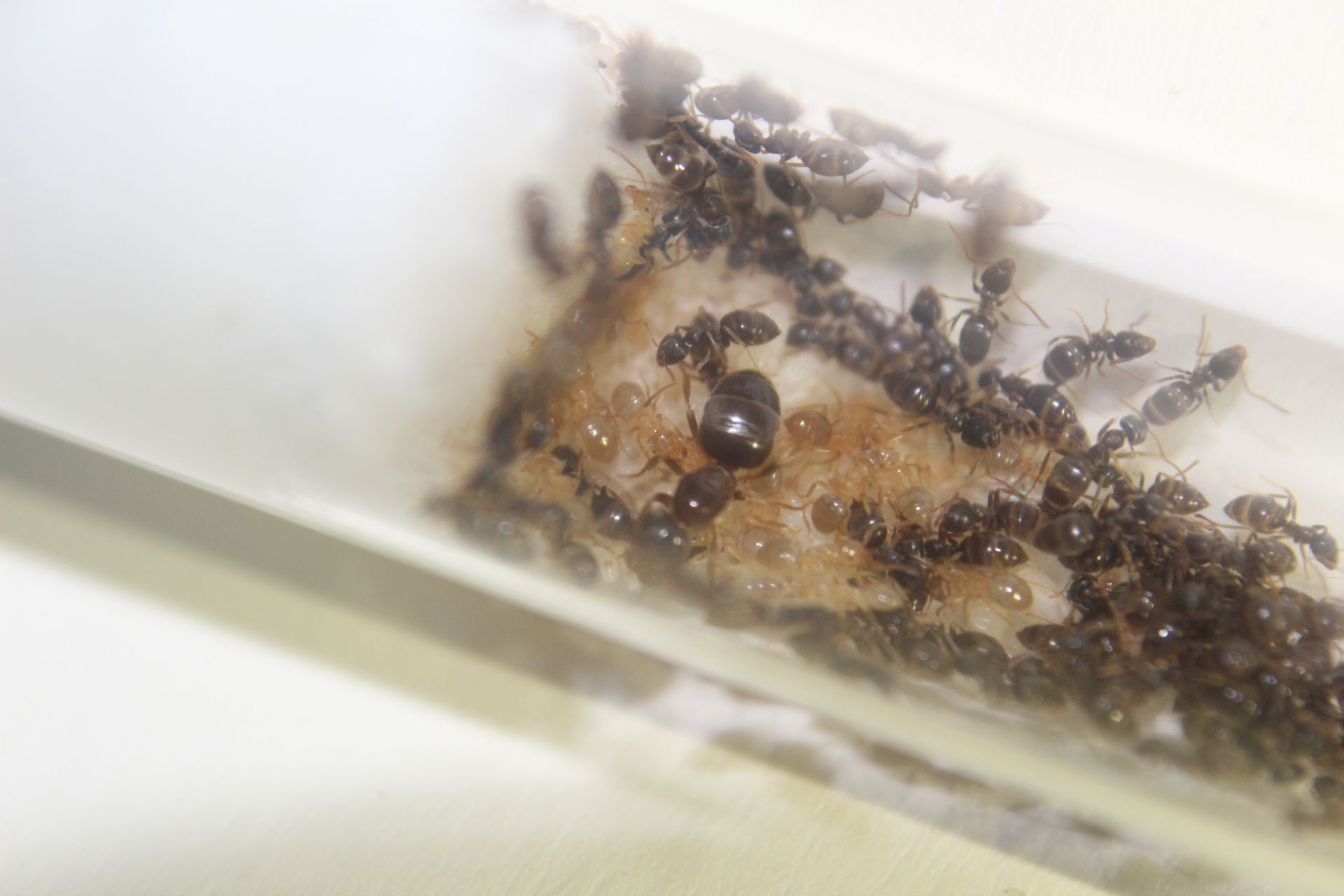
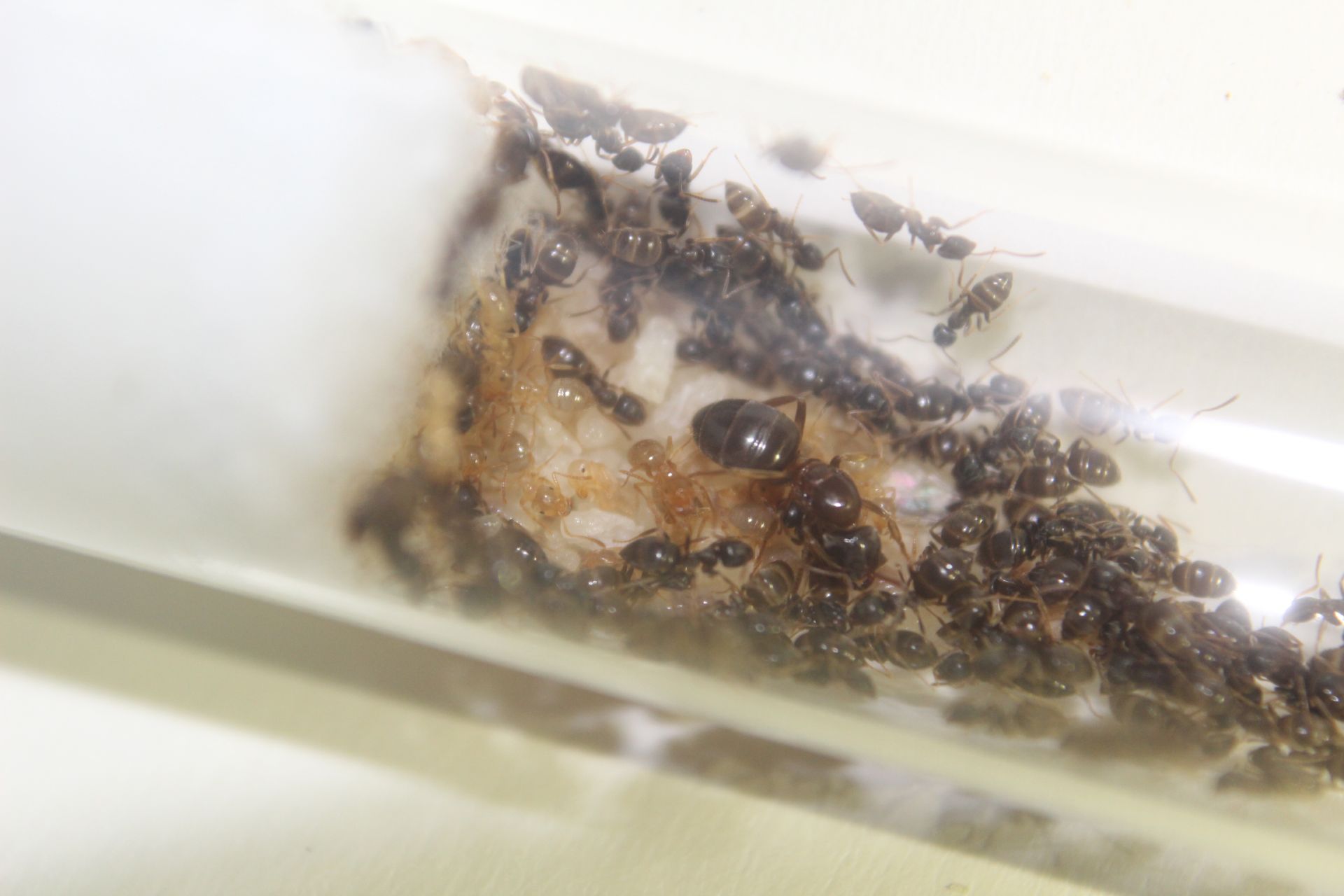
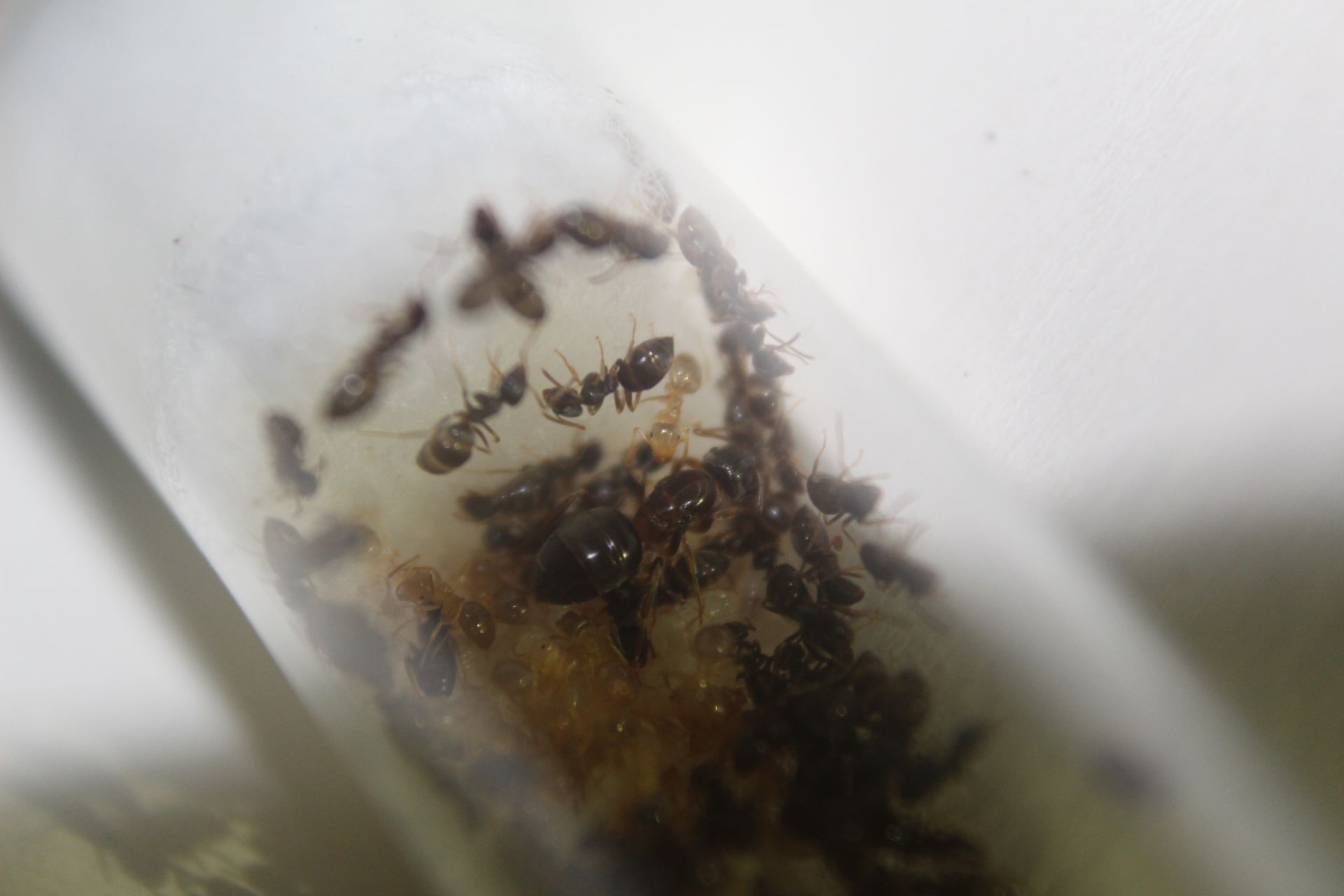
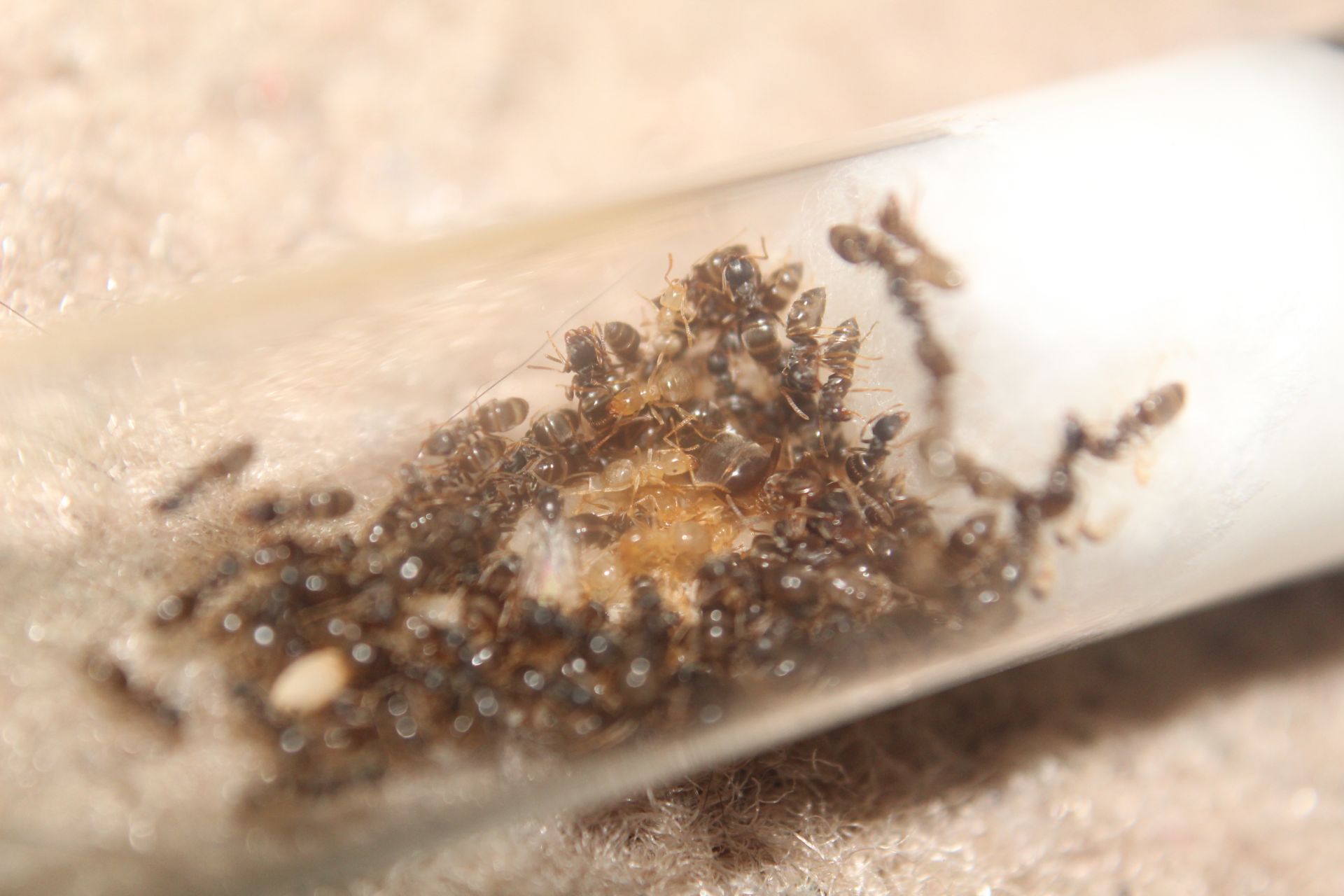
Here's one of the curious L. claviger queens in the dual-queen colony.
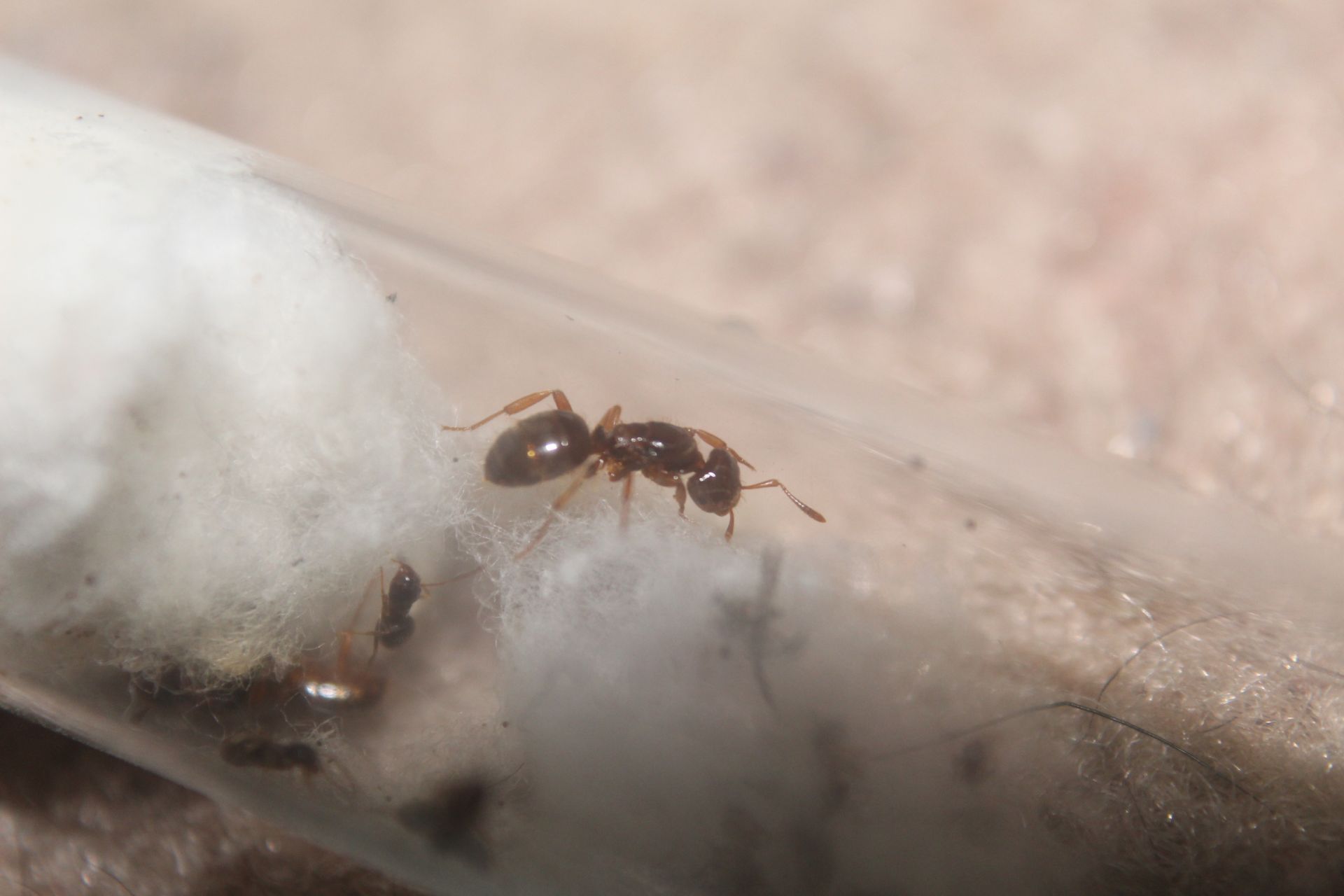
Ant Keeping & Ethology Discord - 2000+ Members and growing
Statesideants.com - order live ants legally in the US
Ant Keeping →
Ant Keeping Journals →
Chickalo's Lasius neoniger (WIP Title)Started by Chickalo , Sep 1 2025 |
|

|
||
Anting →
General Anting →
First Lasius atopus queen ever collected?Started by bmb1bee , Aug 11 2025 |
|

|
||
Ant Keeping →
General Ant Keeping →
Ant Colonies for Sale, Tetramorium, Lasius, ManicaStarted by Stubyvast , Jul 23 2025 |
|

|
||
Ants & Myrmecology →
General →
Poll
Would you buy these queensStarted by OwlThatLikesAnts , Jul 17 2025 |
|

|
||
Ant Keeping →
Ant Keeping Journals →
RMA's Lasius claviger Charade (Updated 7/28/'25)Started by RushmoreAnts , Jun 2 2025 |
|

|
0 members, 1 guests, 0 anonymous users